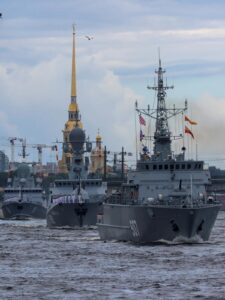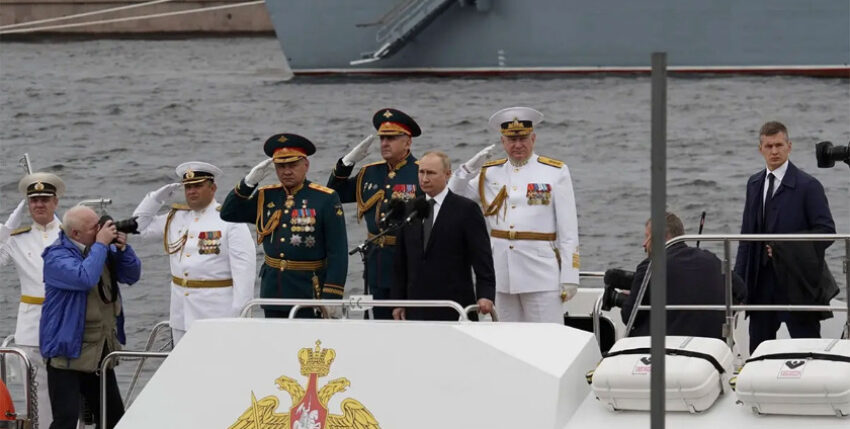Of course, there were once again impressive pictures of the large main parade of the naval forces of the Russian Federation in Saint Petersburg to mark the 326th anniversary of the founding of the Russian Federation, which dates back to Peter the Great at the end of the 17th century and was moved from 24 July to the last Sunday of the month in 1980. However, in the year of the Ukraine war, it was a quarter "more subdued" - 40 ships, submarines and boats, mostly of smaller tonnage, plus 42 aircraft and helicopters, involving 3,500 soldiers.

New naval doctrine issued
This makes the new naval doctrine, which the Commander-in-Chief, President Vladimir Putin, signed between the morning naval parade of the larger units in the roadstead in front of Peterhof Palace and the later parade of the smaller units on the Neva - in the Historical Museum on the island fortress of St Peter and Paul opposite the Hermitage - all the more threatening. The doctrine does not contain anything completely new - everything has already been said before, or has been feared from logical deduction, where it has not yet been decidedly publicised.
Threat and response
The most serious threat to Russia's security is the USA with its "unchallenged claim to hegemony" in the world, followed by NATO, which is expanding without restraint. The only way to counter this is for Russia to clearly define its security interests and areas of interest (primarily the Arctic, but also the Baltic Sea, Black Sea and Kuril Islands), for the Russian Navy to reaffirm these interests by increasing its presence worldwide and for Russia to maintain free access to raw materials and lines of communication. To this end, relations with key states (India, Iran, Iraq, Saudi Arabia) must be strengthened and naval bases expanded - from the Pacific Basin to the Indian Ocean (India, Africa), the Red Sea (Port Sudan) and the eastern Mediterranean (Tartus).

Ambitious shipbuilding programmes
Aircraft carriers and large amphibious ships are to be built for this purpose - in naval infrastructure to be reinforced in Crimea, Kaliningrad and Vladivostok and the surrounding area. To this end, civilian ships and crews are also to be "taken over" by the navy, as stated in the second of the decrees issued.
Successful missiles
The cruise missiles against land and sea targets (Kalibr) are well positioned, the hypersonic missile (Zircon) will be delivered to the naval units before the end of the year - initially to the frigate "Admiral Gorshkov" moored on the Neva opposite the "Amirality" (Supreme Command of the Navy since 2012). So that the response to any interference with Russia's sovereignty and freedom can be a "powerful" one. However, the whole thing is not aimed at confrontation, according to the Kremlin's assurance of peaceableness.
Good to know
During the ceremony in Saint Petersburg, the staff building of the Black Sea Fleet in Sevastopol was visibly damaged by a drone attack and the parade there was immediately cancelled - Kiev knows nothing about it, and neither did Russia! Once again, nobody spoke of war that day!










